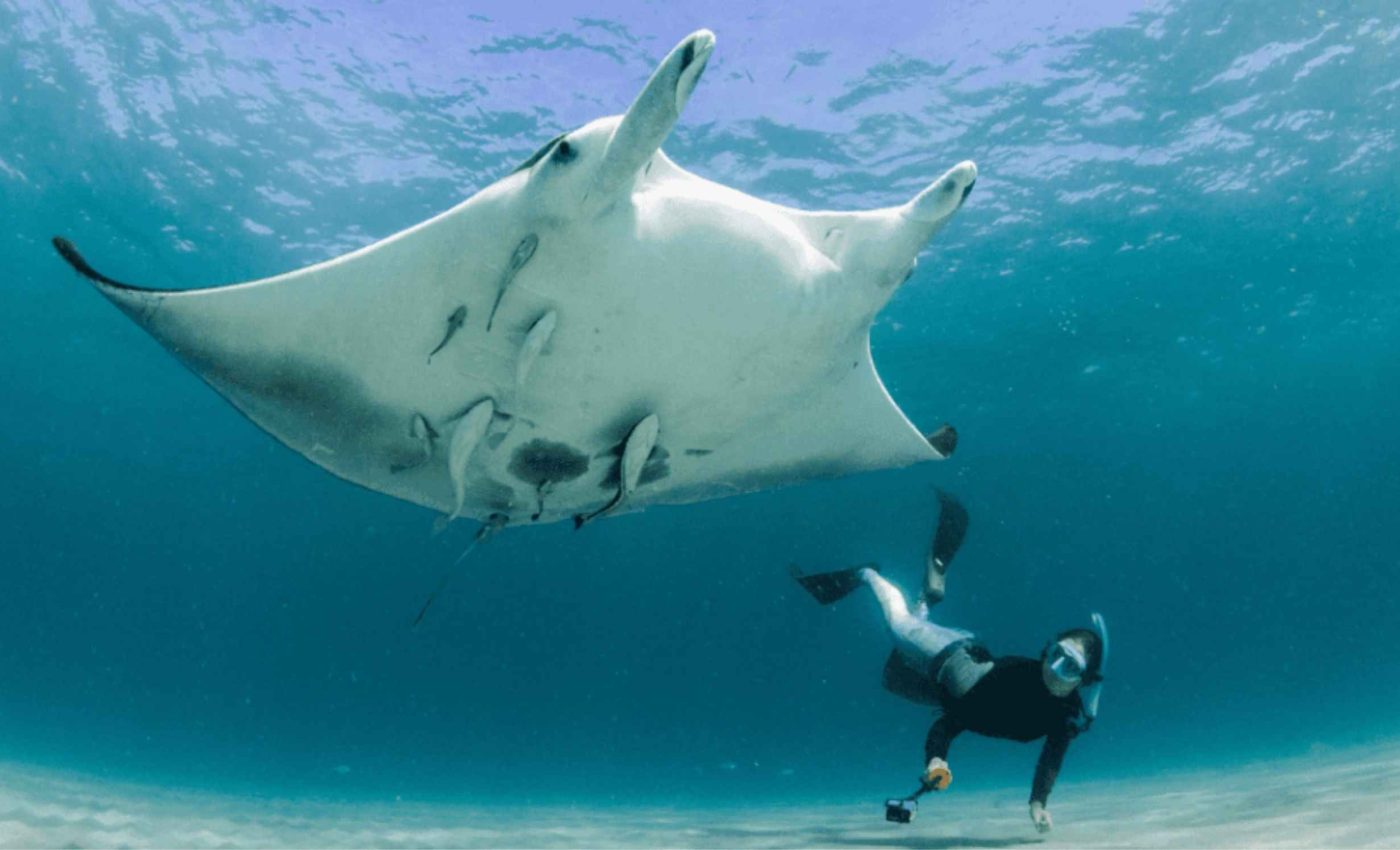
Giant 'cryptic' new sea creature discovered in the crystal clear Florida waters
Scuba divers off Florida watched a bold black and white ray with a whip-like tail sweep past, and scientists have now confirmed it as a new species named Mobula yarae, the Atlantic manta ray. It is the third recognized manta ray species.
The Atlantic manta ray reaches an estimated width of 16 to 20 feet, putting it squarely in small motorboat territory. It lives only in Atlantic waters.
Mobula yarae – confirming a new species
The formal description was led by Nayara Bucair at the Institute of Oceanography, University of São Paulo (LabGEO). An international team contributed photographs, specimens, and genetic data spanning the United States, Mexico, the Caribbean, and Brazil.
“Manta and devil rays comprise a vulnerable animal group with a complex nomenclatural history and a somewhat unresolved taxonomy,” wrote Bucair.
The new paper resolves a long standing question about an Atlantic manta that had been hinted at for years.
Scientists used integrative taxonomy, a combined approach that examines body form and DNA together to evaluate where a population fits.
The team’s genetic trees placed Mobula yarae as a distinct lineage related to the giant oceanic manta and the reef manta.
Florida specimen that sealed the case
A key turning point came from a specimen recovered near Pompano Beach, Florida, on July 19, 2017, which became the holotype cataloged as USNM 443866 at the Smithsonian’s National Museum of Natural History.
A holotype is the single name bearing specimen that anchors a species description.
That Florida individual provided measurements and tissue for both mitochondrial and nuclear analyses. It linked scattered reports into a single, verifiable identity for the Atlantic species.
How Mobula yarae stands apart
Mobula yarae shows a suite of traits that, in combination, separate it from its cousins. It has a diamond shaped body, a flat head, and a whip like tail with a small calcified bulb at the base.
Its skin carries stellate dermal denticles, small star shaped tooth like scales aligned into subtle ridges.
The shoulder shows clean V shaped white patches on a predominantly black back, and the belly is pale with restrained spotting that does not run between the gills.
The mouth sits at the front and holds a narrow tooth band on the lower jaw with 9 to 13 rows, a count that differs from both giant and reef mantas.
These details, together with overall proportions, allowed precise separation without relying on a single feature.
Protecting Mobula yarae
The species appears in coastal and estuarine waters as well as around islands, which puts it near people and their gear.
It is a large filter-feeder, harvesting tiny plankton in water near the surface, where boat traffic and fishing are common.
Federal scientists reviewing manta rays report that overutilization and incidental capture remain major risks, alongside vessel strikes and pollution.
Coastal fisheries, shrimp trawling, and discarded lines can injure or kill animals that spend time near shore.
The two previously recognized manta species illustrate the conservation pressure already in play. Reef mantas are globally listed as Vulnerable and giant mantas as Endangered on international assessments that inform policy.
Names change conservation
A confirmed name clarifies everything from survey records to legal protection. Until now, many Atlantic sightings were filed as lookalikes of the giant manta, which muddied trends and threat assessments.
“The existence of a putative undescribed species of manta ray in the Atlantic Ocean has been proposed for over 15 years,” wrote Bucair.
Formal recognition replaces speculation with a reference point that managers and researchers can use.
With a verified identity, agencies can reassess bycatch tallies and habitat models that previously lumped Atlantic animals with the giant manta. That shift makes population change easier to detect and act upon.
What to watch next
Future work will refine range edges and movement patterns with tags, photo ID, and genetics. Researchers will also parse how often juveniles use nearshore waters in Florida and the Gulf of Mexico, where human activity is concentrated.
“To date, the new manta ray species has been recorded only in Atlantic waters, inhabiting oceanic islands and archipelagos as well as coastal and estuarine regions, areas under major threats due to pollution, boat strikes, coastal fisheries, and habitat degradation,” wrote Bucair.
That summary sets clear priorities for monitoring and mitigation.
Citizen scientists can help by submitting clear belly photos from responsible encounters, since individual spot patterns are unique.
Well curated images, combined with museum specimens and phylogeny tools, can strengthen abundance estimates without repeated handling.
The study is published in Environmental Biology of Fishes.
Photo credit: Bryant Turffs.
—–
Like what you read? Subscribe to our newsletter for engaging articles, exclusive content, and the latest updates.
Check us out on EarthSnap, a free app brought to you by Eric Ralls and Earth.com.
—–













